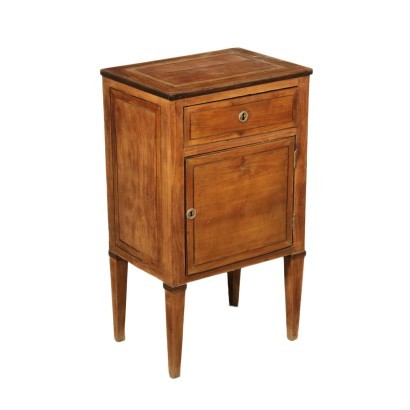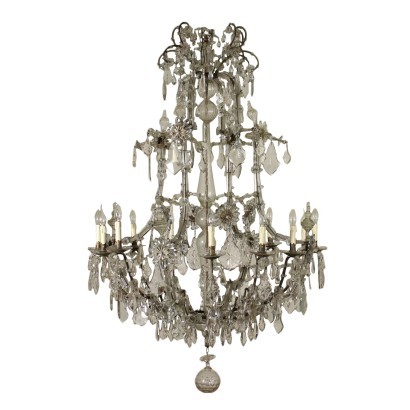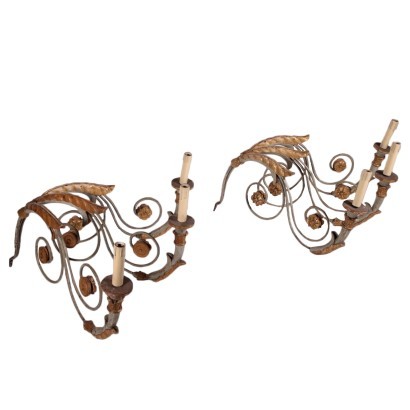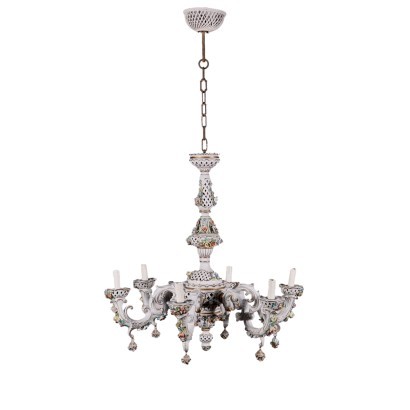Neo-Classical Emilian Bedside Table Italy 18th Century
Features
Style: Neo-Classical (1765-1790)
Age: 18th Century / 1701 - 1800
Origin: Emilia Romagna, Italy
Main essence: Cherry , Ebony , Poplar
Description
Neo-classical Emilian bedside table supported by pyramidal truncated legs; frontal door surmounted by a drawer. Cherry with ebony threads and ebonized frames, poplar interiors.
Product Condition:
Fair condition. Wear consistent with age and use.
Dimensions (cm):
Height: 83
Width: 47
Depth: 34,5
Additional Information
Style: Neo-Classical (1765-1790)
This historical period includes a first phase that can be properly defined as the Louis XVI style.nOnly at a later time, with the maturation of archaeological fashions, was a new vision of furnishing civilization formulated and codified, now fully attributable to the Neoclassical Style.
In fact, both trends coexisted in unison until the last years of the eighteenth century.
nIn the field of cabinet making, the Directoire, Retour d'Egypte, Consular and Empire styles also fall within the neoclassical era.
nFind out more about Neoclassicism with the insights from our blog...
n
Age: 18th Century / 1701 - 1800
18th Century / 1701 - 1800Main essence:
Cherry
Obtained from prunus cerasus , a plant of oriental origin, it is a hard wood with a light and delicate color, with a reddish vein. Due to its diffusion and availability it was used in Europe in popular furniture. In cabinet making, in the seventeenth century, it was widely used in France and England for inlay work. In Italy it was very successful in Lucca. It was also very popular in the United States for the manufacture, from the late 1600s, of commonly used furniture.The dictionary of antiques: Eclecticism
Classic Monday: a sofa from the 1800s example of eclecticism
Ebony
Without any doubt it is one of the most precious and appreciated essences ever. Very hard and resistant, it is pleasant to the touch thanks to its smoothness, it is a wood with a typical black color. Being very rare it was traded as a precious metal and frequently forged. Because of its hardness, it is very difficult to work, which is why the term cabinetmaker, which indicates the very skilled craftsman in fine carpentry works, derives from this very essence. In modern times, it was introduced by the Flemings and Germans and immediately enjoyed success with the French. The golden period for Ebony was the Baroque, especially in the Boulle style workings. In general it is widely used in inlays, but also for furniture upholstery, for contrasting effects alongside brass, bronze and tortoiseshell.Poplar
Essence considered "poor", it is a white wood, with yellowish or greyish shades, light and tender, which is easily damaged. It is used for rustic furniture or in the construction of furniture. The most valuable use it has had in the history of furniture is in Germany, in the 19th century, for veneers and inlays in the Biedermeier period. It could also interest you
































